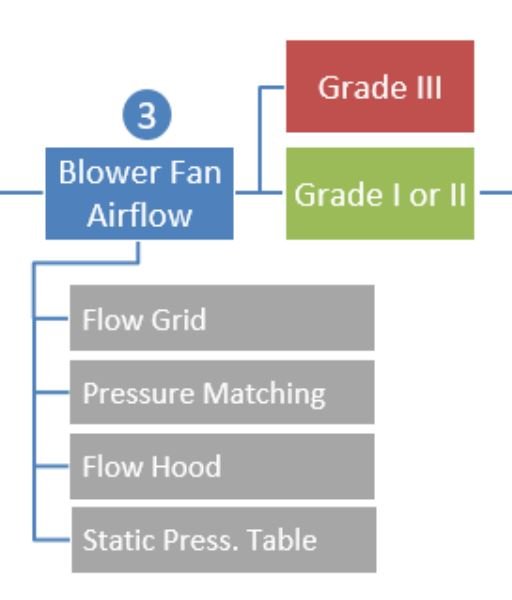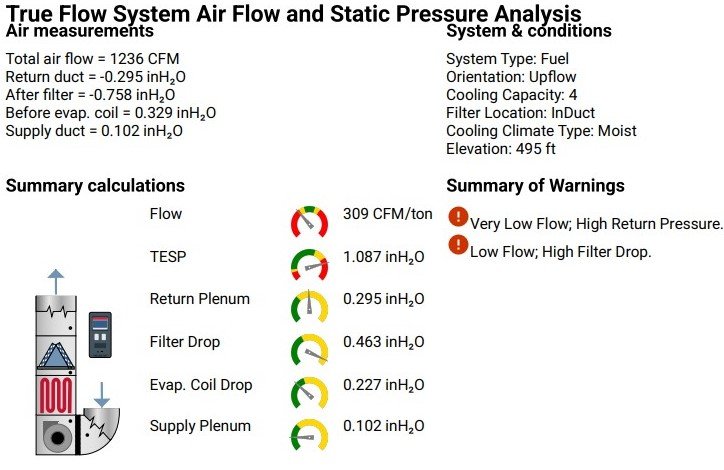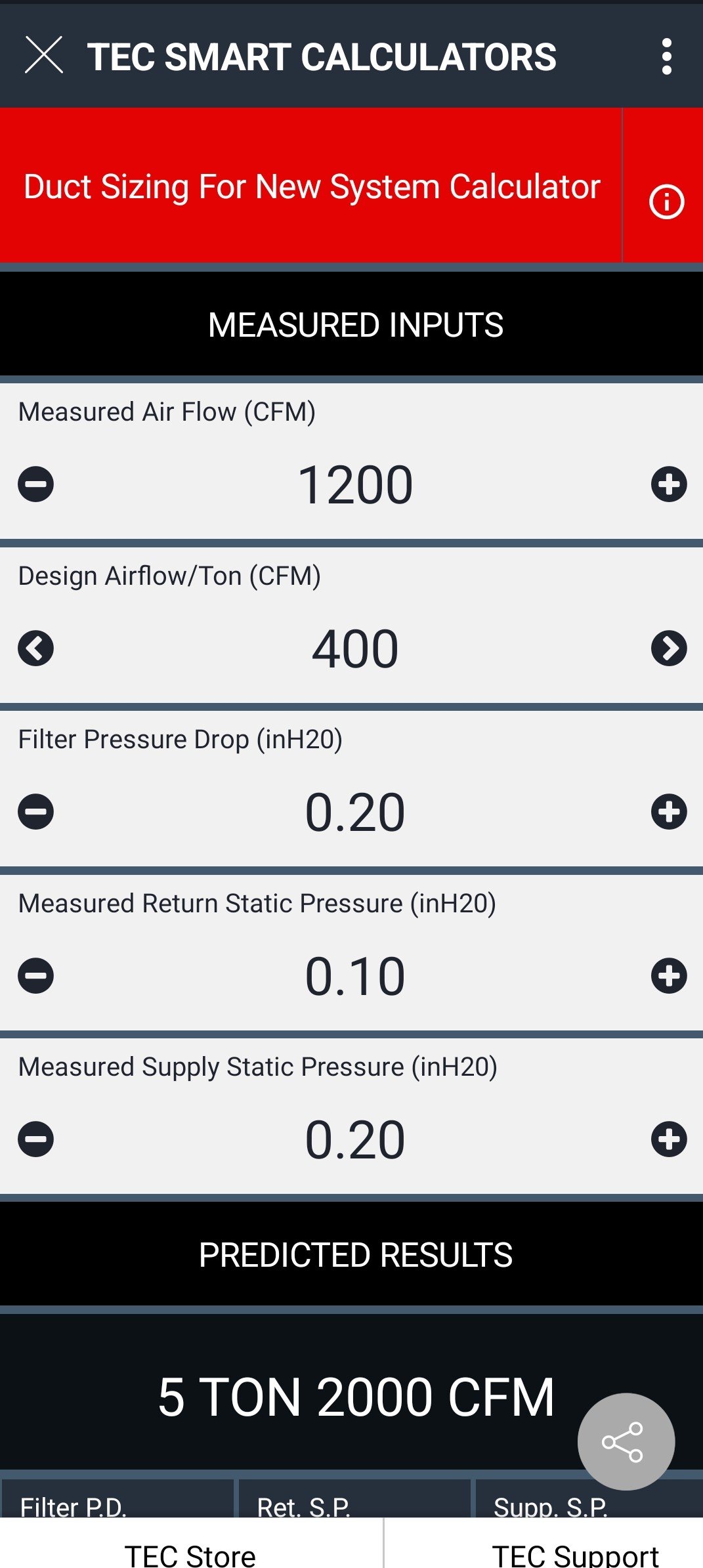Get Tech Tips
Subscribe to free tech tips.
Replacing Residential HVAC Equipment With “Predictable Results”
When replacing a furnace or air handler for a customer, there is nothing worse than starting up the equipment and having it sound like the latest SpaceX rocket taking off. You insert your static pressure probes into the duct, and your stomach drops as you read the numbers.
You realize the new high-end system you’ve just installed is running like trash.
The easiest thing to do is to blame the ductwork and call it a day. The problem is that people might start calling you Elon—or even worse, the affectionate nickname given to Kim Jong Un, “Rocketman.” If this situation sounds oddly familiar, and you’re looking to step up your game, this is the tech tip for you.

A quick word about equipment sizing
First and foremost, I always like to consider Manual J and S when replacing residential equipment. I have found that, more times than not, the equipment is oversized and has undersized ductwork.
This bit is the low-hanging fruit of the article. If you install smaller equipment, the external static pressure (ESP) of your system will naturally drop due to the reduced airflow requirement. I have found that, at times, relying on equipment sizing alone isn’t enough to get the job done.
Measurements you’ll need
Time for the meat and potatoes of my process. When I run an estimate, I will measure the total system airflow, which can be done in several different ways. Below is a picture that I took from page one of the ANSI/RESNET/ACCA Standard 310 process. It includes the four approved methods of measuring total system airflow. I personally use the TrueFlow Grid in my process, but any of the four methods will work.

Next, I take several different static pressure measurements: before the filter, after the filter, before the evaporator coil (if it is a furnace), and after the evaporator coil. With these measurements, you can figure out external static pressure as well as the pressure drops across the air filter and evaporator coil. When taking the measurements, I recommend doing so with a new air filter for the most accurate real-world conditions. With all of this information, I can make some good decisions about what to offer to the customer.
Using fan law 2
Now, let's get to the fun part, the math! Below is an image I pulled off the internet a few years ago, which I believe came from the National Comfort Institute.

Credit: National Comfort Institute (NCI)
The first time I saw this formula, I was quite intimidated—anything that has more letters than numbers gives me anxiety. Let's break this down, and you’ll see how easy it really is.
SP1 = Static pressure measured or pressure drop measured on the existing system
CFM1 = Airflow measured on the existing system
CFM2 = Desired airflow of the system you would like to install (if you want to get really accurate, your design airflow should be based on the guidelines of Manual S and the manufacturer's performance data)
Fan law 2 in action
Let’s look at an example of a recent estimate that I completed. As you can see, the static pressure was awful, and the airflow was fairly low for the 4-ton that was installed.
My total system airflow was 1,236 CFM. This number would get plugged into the CFM1 area. The target airflow for the new air handler is 1,050 CFM. This number gets plugged into CFM2. This portion of the equation will stay constant for each of the next few steps.

The static pressure measured after the coil or in the plenum is 0.102” and would go in the SP1 section. Now, we can do the math to figure out what the static pressure will be in my plenum if I only reduce the airflow to 1,050 CFM. As you can see, the static pressure of the supply will now be 0.07”.


Now, let's do the same thing with the return static, which is 0.295”.

The static pressure of the new air handler’s return duct will be 0.21”.
Pressure drops across the filter
This next portion is where you can really make a difference. Let's look at the pressure drop of the filter, which is 0.463”. Then, let’s select a filter with a lower pressure drop. If we reduce the pressure drop of the filter, we can reduce the ESP of the whole system. Here is a chart for Clean Comfort media filters:

So, this 20”x25” filter has a pressure drop of 0.06” at 246 feet per minute velocity.
Whoa, nobody said anything about velocity!
Unfortunately, velocity is how most filter manufacturers list their pressure drops. That will add an extra step to our process. Let's look at the math to convert velocity to CFM.
Velocity x Area = CFM
Note: To obtain square feet of the filter, multiply height times width and then divide by 144. That equation looks like this:

Now we can use this to convert their rated velocity to rated CFM
246 (Rated FPM) x 3.47 (Area of filter) = 854 CFM
Incorporating static pressure drop across the filter
So, the pressure drop of this filter is 0.06” @ 854 CFM. Now that we know this, we can solve for the pressure drop at our new system airflow, 1,050 CFM. Just change the measured airflow to 854 CFM; that’s the airflow that the new media filter is rated for.

We now know that the pressure drop of the Clean Comfort 20”x25” media filter at our desired system airflow of 1,050 CFM is 0.09”. This particular customer wants to go all-electric, so we don’t have to calculate the pressure drop of the evaporator coil. The evaporator is not external to the air handler, so it doesn’t need to be included in the external static pressure.
If the customer wanted to install another furnace and evaporator coil, we could use this same math on the evaporator and compare the pressure drop of the new coil to make sure our ESP is in an acceptable range. You can choose an evaporator coil with a lower pressure drop if need be.
Equipment selection
When selecting any equipment, I recommend that you make sure you meet the sensible and latent capacity by following Manual S. But what does that all mean? Let's put it all together.

New supply static pressure = 0.07”
New return static pressure = 0.21”
New filter pressure drop = 0.09”
Now, add the filter pressure drop to return static pressure, which will give us the total return pressure, including the filter.
0.21” (Return pressure) + 0.09” (Filter P.D.) = 0.3” (Total return pressure)
Add the total return pressure to the supply pressure. This step will give us the new TESP (total external static pressure).
0.3” (Return Pressure)+ 0.07”(Supply Pressure) = 0.37” (TESP of the new system)
Conclusion
By spending the time to take a few measurements and do some basic math, I can sleep well at night because I know that I will be improving my customers' new system. Reducing their ESP from 1.087” down to 0.37” reduces warranty issues and ensures that the equipment will run much quieter while consuming less energy. I have found that Fan Law 2 has drastically improved the final outcome of my installations.
In full transparency, Steve Rogers from The Energy Conservatory tested the pressure drops of many different filter manufacturers’ products at different air flows and compared the results to Fan Law 2. He found that filters don’t follow Fan Law 2 exactly, and you can be more accurate by changing the exponent in the equation. Here is what that would look like:

If you have a scientific calculator or are good at Excel and want to dive into the minutiae, then knock your socks off. However, if you’re doing this by hand, it will probably get you close enough if you leave the exponent at 2. That’s my two cents.
—Adam Mufich
P.S. – There are several Fan Law 2 apps available. The two I use frequently are Lau Fan Law Calculator and TEC Smart Calculators. And yes, the TEC Smart Calculator does use the exponent of 1.3.


P.P.S. – Tim De Stasio wrote a tech tip about all three fan laws and fan curve charts. You can read it HERE.











Comments
This is great stuff Adam! The detail is fantastic and I learned quite abit about Fan LAw 2. I lie it and will be incorporating this information into my HVAC classes next year and this summer. Thank you for your article and keep up the wonderful work you are doing!
This is great stuff Adam! The detail is fantastic and I learned quite abit about Fan LAw 2. I lie it and will be incorporating this information into my HVAC classes next year and this summer. Thank you for your article and keep up the wonderful work you are doing!
Thank you Ben, I hope it helps your process.
Thank you Ben, I hope it helps your process.
I thoroughly enjoyed reading your blog post on replacing residential HVAC equipment with predictable results. Your insights and recommendations provide valuable guidance for homeowners and HVAC professionals alike.
I found your emphasis on proper sizing of HVAC equipment particularly insightful. It’s crucial to ensure that the new system is accurately sized to meet the specific heating and cooling demands of the home. Oversized or undersized units can lead to inefficiencies, discomfort, and increased energy consumption. Your tips on conducting load calculations and considering factors like insulation, air infiltration, and climate conditions are key to achieving optimal system performance.
Furthermore, your mention of the importance of professional installation and regular maintenance resonates well. Proper installation ensures that the system operates at its optimal performance level and maximizes its lifespan. Regular maintenance, including filter replacements, coil cleaning, and system inspections, is vital for maintaining efficiency, preventing breakdowns, and prolonging the life of the equipment.
Thank you for sharing your expertise and insights in this blog post. Your practical advice and focus on predictable results in HVAC equipment replacement are invaluable for homeowners and HVAC professionals seeking to optimize comfort, energy efficiency, and system longevity. Keep up the great work!
I thoroughly enjoyed reading your blog post on replacing residential HVAC equipment with predictable results. Your insights and recommendations provide valuable guidance for homeowners and HVAC professionals alike.
I found your emphasis on proper sizing of HVAC equipment particularly insightful. It’s crucial to ensure that the new system is accurately sized to meet the specific heating and cooling demands of the home. Oversized or undersized units can lead to inefficiencies, discomfort, and increased energy consumption. Your tips on conducting load calculations and considering factors like insulation, air infiltration, and climate conditions are key to achieving optimal system performance.
Furthermore, your mention of the importance of professional installation and regular maintenance resonates well. Proper installation ensures that the system operates at its optimal performance level and maximizes its lifespan. Regular maintenance, including filter replacements, coil cleaning, and system inspections, is vital for maintaining efficiency, preventing breakdowns, and prolonging the life of the equipment.
Thank you for sharing your expertise and insights in this blog post. Your practical advice and focus on predictable results in HVAC equipment replacement are invaluable for homeowners and HVAC professionals seeking to optimize comfort, energy efficiency, and system longevity. Keep up the great work!
To leave a comment, you need to log in.
Log In